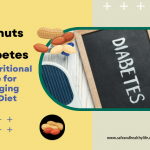
You may have heard that it is easier to lose weight on a ketogenic diet than on other weight loss programs. You may have even heard that a ketogenic diet gives you more energy, makes you hungry less often and you start to feel as if you have laser-like focus. These are some of the things people on ketogenic diets and extended ketogenic lifestyles report as being part of the experience of achieving ketosis. As with most diets, the ketogenic diet has some inherent dietary restrictions and conditions that help you to achieve this desired state of ketosis. As a rule of thumb, starchy foods like potatoes and foods composed of sugar and flour should be reduced and avoided on a ketogenic diet. The purpose of restricting these foods is to force your body to convert over to deriving energy from ketones. This happens when your body starts burning more of that unwanted body fat you have been holding onto for a while now. If you experience any serious problems on a ketogenic diet, you can contact Australia’s home doctor service to get guidance from a medical professional available in your area. The following are 10-foods that are perfectly acceptable to eat on a ketogenic diet.
1. Coconut Oil
Fat consumption is a central foundation of a ketogenic diet. An important key source of saturated fat is coconut oil. It is a great oil for cooking since it does not become unstable when exposed to the medium to high cooking temperatures. This makes coconut oil a safer option than cooking with polyunsaturated fats, such as most vegetable oils, which tend to turn into a kind of free radical soup inside the human body. In addition, coconut oil has medium and long chain fatty acids that play important roles in the health of the body. In particular, medium chain fatty acids are broken down in the liver and this releases ketone body which your body prefers to use as an efficient fuel for energy.
2. Butter
Another animal-derived saturated fat that is healthy for low to medium heat cooking is butter. This is also acceptable on a ketogenic diet. Butter contains many important key nutrients: such as vitamin D, E, A, and K. Typically grass-fed butter is the best to use. Butter should also be consumed instead of margarine which is not a healthy alternative to real butter. Try to remember that your goal is to eat 75-percent fat on a ketogenic diet.
3. Avocado
Considered a fruit, Avocado is a healthy source of monounsaturated fat. In general, a ketogenic diet stays away from most fruits, because of their high sugar content. Avocados are one of those foods that work great in a salad or which might be useful to thicken up or add flavor to other meal options.
4. Olives
Olives can be a great source of healthy fat to add to most any ketogenic meal. They go great on a salad, and they are just as appetizing as a snack by themselves. If you want to be creative, you can even stuff olives with cheese or sour cream and pack them on sticks of celery for an appetizer.
5. Cheese
Popular types of food consumed on a ketogenic diet are various types of cheese. Cheese is a great source of healthy fat and can be a great snack to stave off hunger. In addition, cheese may be used in a variety of different contexts to generate a lot of different ketogenic friendly meal ideas. It can be eaten by itself or cooked into other dishes. Some cheeses even contain varying amounts of vitamin K2 which can aid the body in more easily regulating blood sugar and help reverse calcium accumulation in your arteries over time.
6. Eggs
You may have heard that eating eggs will not clog your arteries with cholesterol as once believed. Eggs are an excellent source of healthy saturated fats that goes good with breakfast. Eggs are also a good way to acquire some animal protein and other dietary nutrients which are helpful in staving off hunger for many hours. What is also great about eggs is that they can be cooked and used in a variety of different ways to provide a considerable amount of substance to ketogenic meals.
7. Moderate Meat Consumption
While a ketogenic diet is high in healthy fats, it tends to be moderate in the use of meat. One problem with eating excessive amounts of meat is that it is a major source of protein. If you get too much protein in your ketogenic diet, your body may have a tendency to convert protein to sugar. This can be bad news for diabetics. However, a ketogenic diet is partly oriented to consuming meat proteins moderately so that this does not become a problem and push your body out of ketosis.
8. Nuts
Another common source of healthy fat and protein on a ketogenic diet can be derived from eating various kinds of nuts. Provided that you do not have any kind of nut allergy, like a peanut allergy, nuts can be a quick snack to ward off hunger. This is especially true when it comes to eating pine nuts. Additionally, the small size of nuts makes them ideal for keeping them on hand as a snack when you are traveling. Nuts are not only good as a snack, but they can sometimes fit in nicely with various ketogenic meal ideas too.
9. Green Leafy Vegetables
A lot of people think that being on a ketogenic diet means to eat zero carbohydrates, but this is not the case. It is actually important to eat the right kind of carbs. In fact, green leafy vegetables that can be used to produce vitamin and mineral rich salads are an excellent food source for a ketogenic eating regiment. This would include iceberg lettuce, spinach, kale, and other similar green leafy options.
10. Peppers
Another acceptable carbohydrate source to add to a ketogenic diet would be various types of peppers. Peppers can provide flavor to any salad. There are even hot and spicy peppers which go well with a vast number of dishes. If you really want a treat when eating a ketogenic diet, then cutting peppers into large chunks and sautéing your peppers in coconut oil with garlic, onions or ginger can be a delightful addition on top of a meat preparation for added flavor. Also, learning how to ferment vegetables like peppers and other acceptable carbohydrates may be an option you might want to try out as well. Not only do they work on a ketogenic diet, but they can considerably improve gut health and digestion too.
Variety the Spice of Life
When it comes to making a ketogenic diet work for you, it is important to not be so restrictive with your food options that your meals lack basic nutrition which your body needs. There are actually a wide variety of nutrient-dense foods to choose from to eat on a ketogenic diet. Combining a ketogenic diet with the practice of intermittent fasting and regular exercise can also be an effective way to drop a considerable amount of weight.
About The Author:
Elizabeth Marks is a freelance writer with a passion for learning new things. She writes regularly about Medical, Health, and Nutrition.




